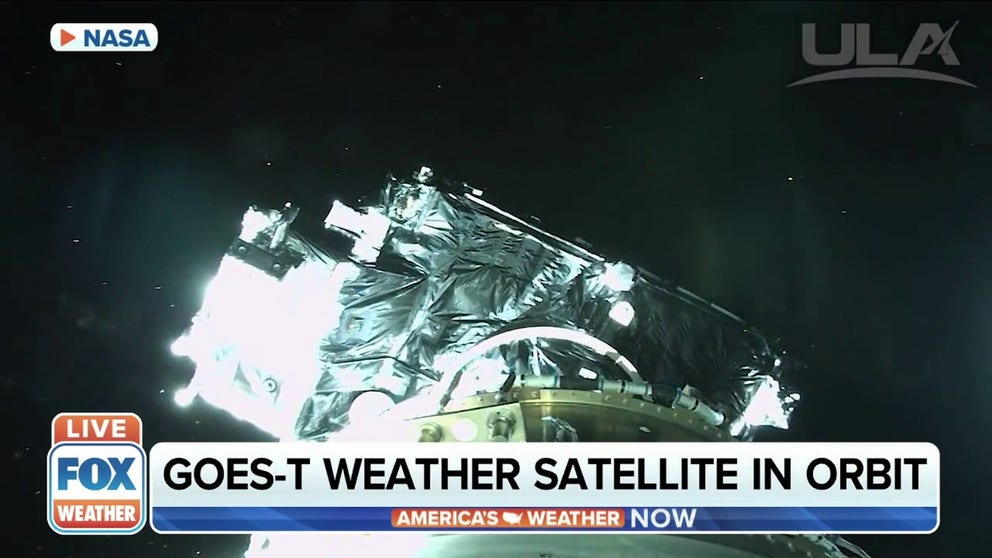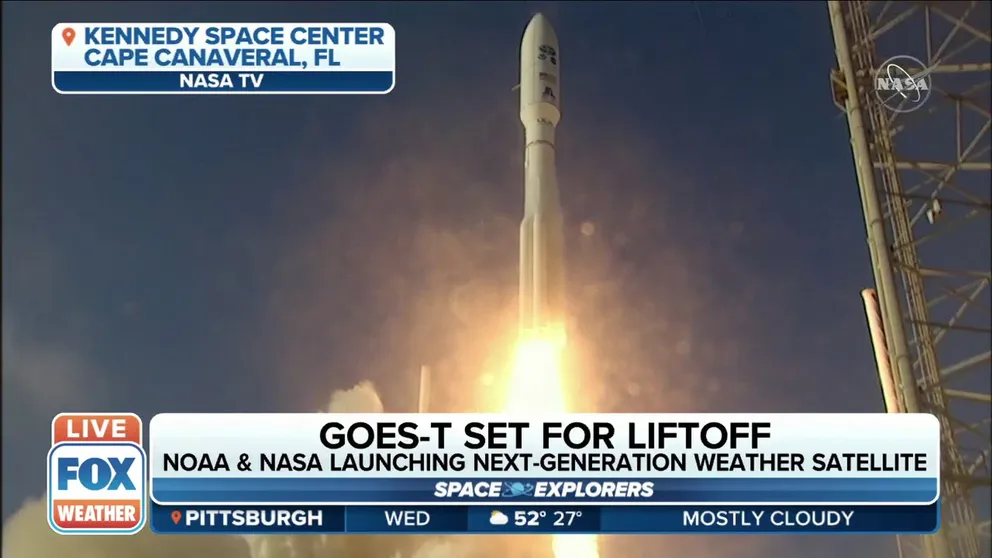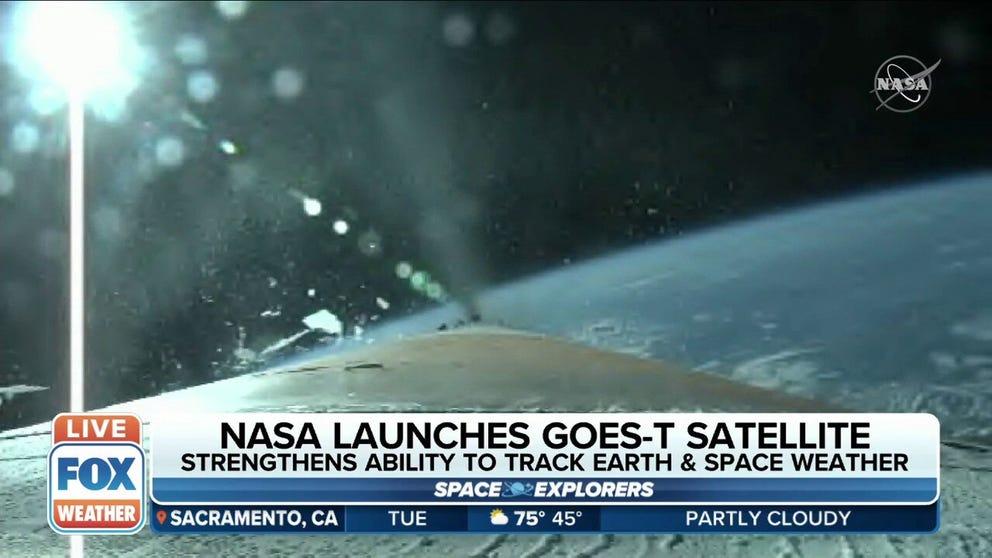NOAA satellite launches from Florida beginning journey to advance weather forecasting
GOES-T launches atop the United Launch Alliance Rocket at 4:38 p.m.
NASA video: GOES-T satellite separates from capsule
GOES-T satellite separates from spacecraft, continues space journey after Cape Canaveral launch.
CAPE CANAVERAL SPACE FORCE STATION, Fla. – America's most powerful weather satellite began its journey in space Tuesday after launching on the Atlas V rocket.
The GOES-T satellite launched atop the United Launch Alliance Rocket at 4:38 p.m.
Despite winds around the launch site at Cape Canaveral Space Force Station Space Launch Complex 41, the conditions were near perfect for the liftoff. Barely a cloud was in the blue sky above Kennedy Space Center as the Atlas soared into the atmosphere.
SEEN FROM SPACE: HOW GOES-T LAUNCH LOOKED FROM 22,300 MILES AWAY
Watch: GOES-T satellite launches from Florida
GOES-T satellite launches from Cape Canaveral, Florida.
The GOES-T satellite is the third in upgraded spacecraft part of the Geostationary Operational Environmental Satellites (GOES) program. After it begins operating in space, the satellite will monitor the western U.S., Alaska, Hawaii, Mexico, Central America and the Pacific Ocean.
NASA holds 'perfect' launch Tuesday, weather satellite begins space journey
FOX Weather digital content producer Emilee Speck on what is to come for the GOES-T satellite after launching from Kennedy Space Center in Cape Canaveral, Florida.
The suite of instruments will track wildfires and provide warnings for severe weather. It will also improve space weather forecasting, giving signs of incoming geomagnetic storms.
HOW NOAA'S NEW GOES SPACECRAFT WILL IMPROVE SPACE WEATHER FORECASTING
On Monday, Atlas V began the 1,800-foot journey from the hangar to Space Launch Complex 41. It took about two hours as the rocket moved at a speed of about 2.5 mph toward the pad.
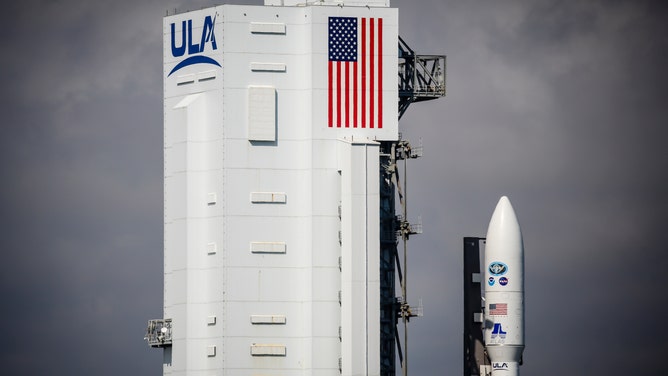
The National Oceanic and Atmospheric Administration's (NOAA) Geostationary Operational Environmental Satellites (GOES) T satellite on a United Launch Alliance Atlas V 541 rocket during the NASA rollout event in Cape Canaveral, Florida, U.S., on Monday, Feb. 28, 2022.
( Eva Marie Uzcategui/Bloomberg via Getty Images / Getty Images)
ULA was selected by NASA's Launch Services Program to launch the new weather satellite.
"We hit the ground running for two years, working with our customer team and understanding all of their unique requirements to make the mission work," ULA integration engineer Glenn Davis said. "Then we go through all the planning on getting all their operations from basically spacecraft arrival to the Cape to working with us to get them encapsulated transported here to the [Vehicle Integration Facility], to put on the rocket and rolled out here for launch."
THE MORE YOU GOES: 7 THINGS TO KNOW ABOUT NOAA'S NEW WEATHER SATELLITE
NASA LSP integration engineer Joan Misner explained getting a spacecraft into orbit is like a ride at a theme park.
"You want to make sure that you stay on that roller coaster that you don't fall off. So we kind of do the same thing with the spacecraft," Misner said. "We just want to make sure that once it's going against gravity, once it's going against all of the elements that spacecraft stays intact, there's nothing that goes haywire."
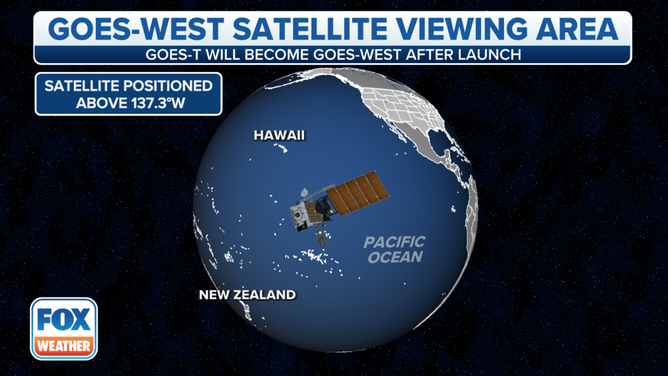
(FOX Weather)
About 3.5 hours after liftoff, GOES-T separated from the rocket and was in orbit around Earth.
After about two weeks when it reaches its final orbit 22,300 miles above Earth GOES-T will be renamed GOES-18. The new satellite will undergo testing of all its instruments before it becomes operational and takes over for GOES-17, monitoring the western U.S., Alaska, Hawaii, Mexico, Central America and the Pacific Ocean.
The GOES program dates back to 1975, when the first satellite known as GOES-A launched from Cape Canaveral. The most recent satellites in the series started launching in 2016, providing higher-resolution images of the planet in near real-time.
